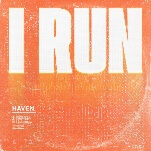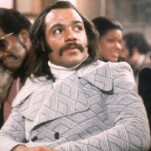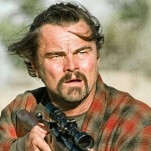Primer: David Cronenberg

David Cronenberg 101:
Not much divides ideas and bodies in the films of David Cronenberg. He places that interchangeability theme front and center in Shivers (a.k.a. They Came From Within, 1975), in which the new freedoms and old anxieties of the sexual revolution took the terrifying shape of friends and neighbors. Set in an antiseptic, ultra-modern Montreal high-rise, Cronenberg’s first commercial effort after a string of student and experimental films charts the course of a disease whose victims begin surrendering to their every sexual whim. By the film’s end, protagonist Paul Hampton is forced to run a gauntlet of sexual discomfort, with scenes of homosexuality, S&M, and pedophilia greeting him at every corner. Is he the last sane man, or the only square at a swinging party?
Shivers doesn’t have the answers. It’s an early example of the tonal neutrality that helps makes Cronenberg’s films so haunting. While much of what unfolds in the film is revolting, it also refuses to paint those in the grips of the new disease purely as victims. At the very least, they’ve liberated themselves from the tyranny of shag carpeting and faux-wood-lined elevators.
For all the obvious dissimilarities, there’s something similar at work in the recent A History Of Violence (2005), another thriller mostly set in the wide-open spaces of the American Midwest. When protagonist Viggo Mortensen surrenders to a murky past, his face changes before viewers’ eyes. There’s no makeup or special effects involved in the moment. It’s just psychology becoming biology, as it so often does in Cronenberg’s films.
Like most of Cronenberg’s early work, Shivers falls into the category of “body horror,” a subgenre he defined, if he didn’t just invent it. Whatever we fear is always with us, because it is us. There’s no getting rid of it: It’s beneath the skin. In A History Of Violence it’s the past that can’t be shaken away, but both films are preoccupied with how forces over which we have only limited control shape who we are.
Intermediate work:
The question of identity—what makes it and what breaks it—haunts many of Cronenberg’s best films. In his 1986 remake of the Vincent Price science-fiction staple The Fly, Cronenberg cast Jeff Goldblum as a brilliant scientist who, while pursuing a teleportation device, melds his DNA with that of a housefly. His slow mutation into a human-insect hybrid lets Cronenberg pursue two questions at once: How do we define the boundaries of our identity? And how many disgusting things can happen to Goldblum’s body?
He’d dropped the second question by the arrival of Dead Ringers in 1988, but the first remained. In a remarkable double performance, Jeremy Irons plays twin gynecologists whose lifelong symbiotic relationship reaches a breaking point when one falls in love. As old habits and outmoded ways of thinking stop working, the two men begin a long descent into madness and addiction that’s shocking and, for all Cronenberg’s characteristic distance, strangely moving.
Cronenberg followed it with the long-in-the-works film version of William S. Burroughs’ Naked Lunch (1991). (Most of his subsequent projects have involved infusing other creators’ projects with Cronenbergian DNA.) Created with Burroughs’ blessing, Cronenberg’s Lunch is less an adaptation than a fantasia on all things Burroughs. As Burroughs surrogate Bill Lee, Peter Weller drifts in and out of a drug-blurred, Beat-era reality, defining himself as an artist and a person at considerable cost.







































